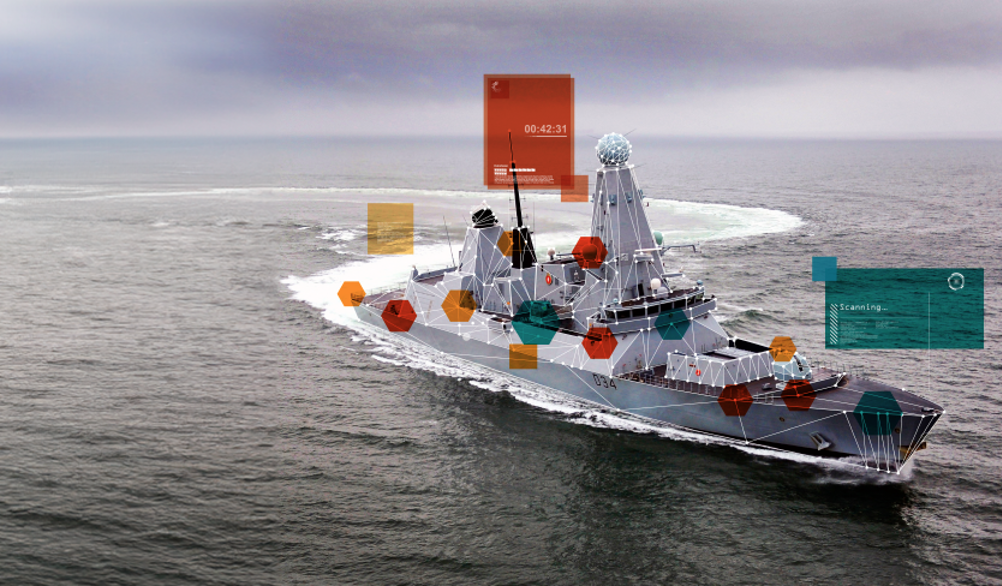Over three-quarters (76%) of defence decision makers across industry have identified a direct link between data and defence readiness. Yet, with much of this data currently disconnected and held in disparate locations, all domains must focus on connecting it in order to be mission ready.
Being ‘mission ready’ is challenging. The blurring of lines between physical and digital threats has created a broader attack surface than ever before, meaning that a lot of the danger now lurks in the grey zone and cyberspace. Traditional, physical examples of conflict are not decreasing, either, and mounting geopolitical tensions are also putting pressure on national defences to be ‘ready’.
Assets, such as warships and fighter jets, help to facilitate this ‘readiness’. However, when it comes to managing these assets, their nature – large, complex and divided across multiple locations – only adds an extra layer of intricacy. As with organisations in all sectors, there is an expectation to make cost-effective decisions and to be able to demonstrate a positive return on investment for each procurement, maintenance or upgrade activity.
A single source of data truth is needed to underpin mission readiness, allowing decisions around key asset investments, ongoing maintenance, monitoring, augmentation and effective deployment to be made with confidence and efficiency.
The disconnected data deluge
Secure and timely access to quality data is key to keeping defence assets in a state of operational readiness and, ultimately, to strengthening the nation’s defences.
Technology capable of generating and producing data around each individual asset already exists, while the ability to derive insight to help inform decisions around asset maintenance, readiness, performance and value is a real possibility.
But the issue is then connecting this data, to ensure that it is reliable and can be seamlessly and securely shared with those who require real-time visibility.
More often than not, information necessary for making strategic decisions around assets is held across a web of internal and third-party systems and applications. The result is a complex, often duplicated – or even contradictory – matrix of data coming from divided silos.

This fragmented status quo and lack of visibility makes it difficult for any user to access a dependable and consistent source of truth – one representation of an asset’s status, relative to the wider infrastructure and real-time capability.
A lot of the time, this disconnect results in decisions that can hinder the goal of mission readiness, or at least cost effectiveness. Repairing or maintaining assets that shouldn’t have been a priority, for example, can lead to unnecessary downtime and can be as expensive as failing to recognise assets that require urgent maintenance or enhancement.
Integrated Product Support: Unlocking the power of perspective
The problem of data disconnect should not be overlooked. When you have a multitude of disparate systems managing different assets, it is likely that an equally broken chain of information is being created. And without a single, holistic perspective of the entire infrastructure and portfolio, real-time decisions can’t be weighed up.
It will always be crucial to strike the right balance. However, given that each asset is being treated individually currently, it can be difficult to know where to prioritise or accurately target investments at the right moment.
To tackle the issue and achieve the fundamental objective of data-driven mission readiness, there now needs to be a move towards aggregation and the breaking down of these data silos.
Effective Integrated Product Support can help to securely connect a web of systems, providing decision makers with a holistic view across their entire infrastructure – in turn, allowing them to ensure assets remain at peak performance for longer. These solutions can be fused together into an organisation’s existing environment, removing the need to invest in a number of new systems, whilst maintaining operational tempo.
Crucially, with Integrated Product Support, modular enhancements of each asset are still enabled, albeit as part of a well-rounded picture of the whole situation – capacity, capability, prioritisation and return on investment.
This gives decision makers in the support teams and on the frontline the power of perspective, equipping them with 360° insights necessary for accurate real-time decisions and enabling greater focus on broader strategy and prioritisation.
Data clarity to provide 360° insight
Safely bringing together siloed sources of data through an Integrated Product Support solution is an important part of being mission ready. This approach can be bolstered by implementing synthetic environments to help test, trial and improve assets. Not only does this support the maintenance process, but it also delivers higher release frequencies of new solutions.
In this next-generation asset management ecosystem, domains are connected, information is securely merged and defence leaders can make strategic decisions with the confidence that all systems are go.

Luigi Sidoli is Head of Campaigns and Programmes – Digital Asset Management at BAE Systems Digital Intelligence











Radio wave weapon knocks out drone swarms
Probably. A radio-controlled drone cannot be completely shielded to RF, else you´d lose the ability to control it. The fibre optical cable removes...